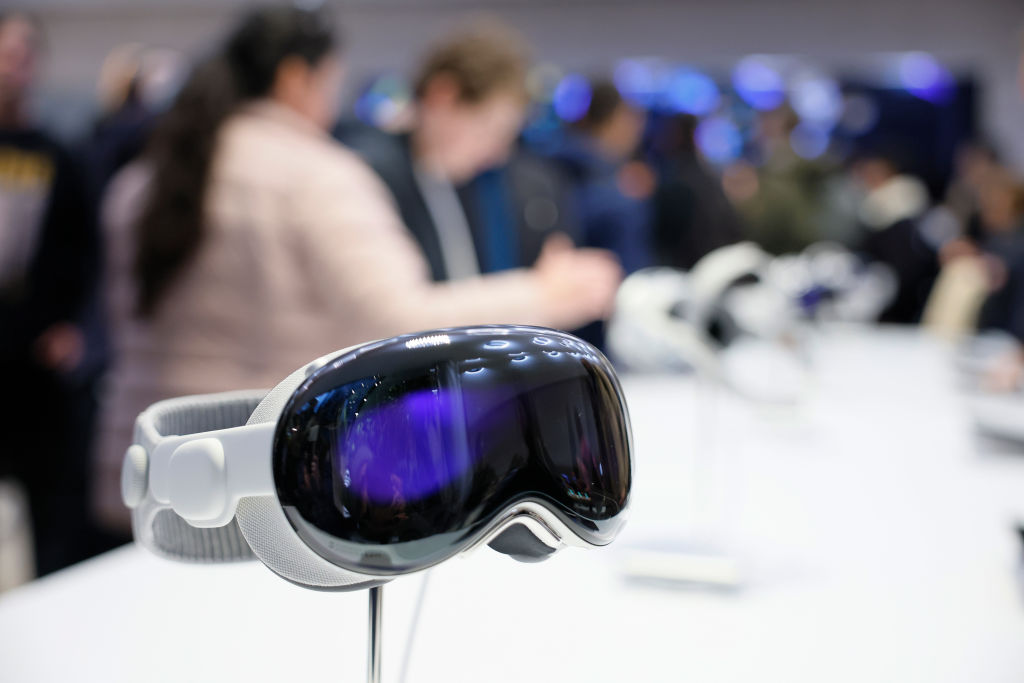
To help you understand what is going on in the tech sector our highly experienced Kiplinger Letter team will keep you abreast of the latest developments and forecasts (Get a free issue of The Kiplinger Letter or subscribe). You'll get all the latest news first by subscribing, but we will publish many (but not all) of the forecasts a few days afterward online. Here’s the latest…
Apple certainly wasn’t the first to launch a virtual-reality headset. But its high-tech, and high-priced, device officially kicked off the virtual reality era. The tech giant will sell over 400,000 units of the Apple Vision Pro in 2024, according to a recent forecast by tech market research company IDC.
Enthusiasm over Apple’s VR debut has been subdued, to say the least. Sales are lower than some analysts had hoped, which has led to naysayers voicing concerns over the viability of VR devices more generally. However, it’s a strong showing for a first-generation headset that starts at a lofty $3,500.
Part of this early push has been getting the device into the hands of software developers so that they can create VR apps and content. Apple is leaning into business uses for the Vision Pro, but sales are split between employers and consumers. Recently, sales slowed in the United States, but have picked up in overseas markets.
A cheaper Vision model is likely to jump-start sales next year and in 2026. The lighter headset will have fewer features and will probably cost around $1,500, with Apple aiming to eventually get its low-cost version priced at $1,000 or less. Considering that there are quality VR devices on the market today that cost $500 or less, driving down the cost of Apple’s version will be key. Apple is also working on an augmented-reality device, a super-lightweight headset that is more like normal glasses that overlay digital information onto the real world.
Facebook-owned Meta is showing what the future of slim electronic glasses could look like. Meta’s Ray-Ban smart glasses have become a hit with diehard users and have exceeded the company’s sales expectations. The Ray-Ban glasses, which start at $300, look like stylish sunglasses but include open-ear speakers, five microphones, a 12-megapixel camera, 32 gigabytes of storage and Wi-Fi/Bluetooth connectivity. Users can give voice commands to snap a photo, video livestream what’s in front of them, listen to music, learn about things in front of them or answer questions via Meta’s artificial intelligence assistant.
Both Meta and Apple want to make AR glasses that are stylish and sleek. Meta is reportedly working on a future set of smart glasses that can display information on the inside of the lens. Apple’s AR headset will have to strike a difficult balance between useful features and lightweight design. A lingering problem with AR devices is users’ limited willingness to wear the glasses all day. Similarly, today’s VR goggles are too bulky and alienate many would-be customers.
It's still a long road ahead for VR to hit the mainstream. Apple will continue a strong VR push, even if it faces some tough sales years in the future. The company has experience launching devices that failed to meet analysts’ sales expectations in the first year, yet went on to commercial success, such as the Apple Watch.
Part of that road map includes doubling down on VR entertainment. Apple recently announced a new collection of upcoming video content for the Vision Pro, including immersive concerts, nature documentaries, virtual hot-air balloon rides and surfing videos. Expect bigger efforts on the production front. Early adopters are still lacking in things to watch and do in VR.
This forecast first appeared in The Kiplinger Letter, which has been running since 1923 and is a collection of concise weekly forecasts on business and economic trends, as well as what to expect from Washington, to help you understand what’s coming up to make the most of your investments and your money. Subscribe to The Kiplinger Letter.







